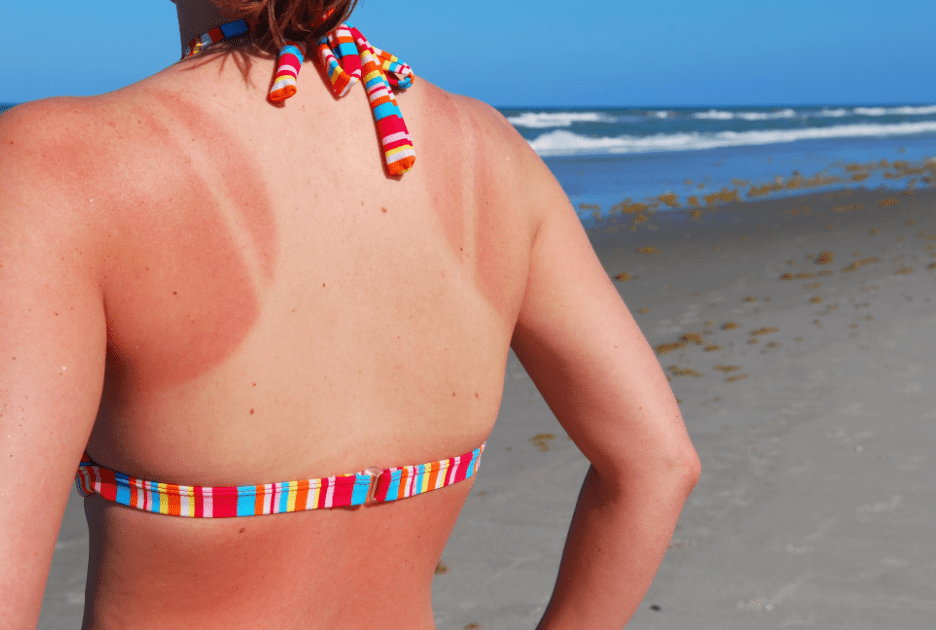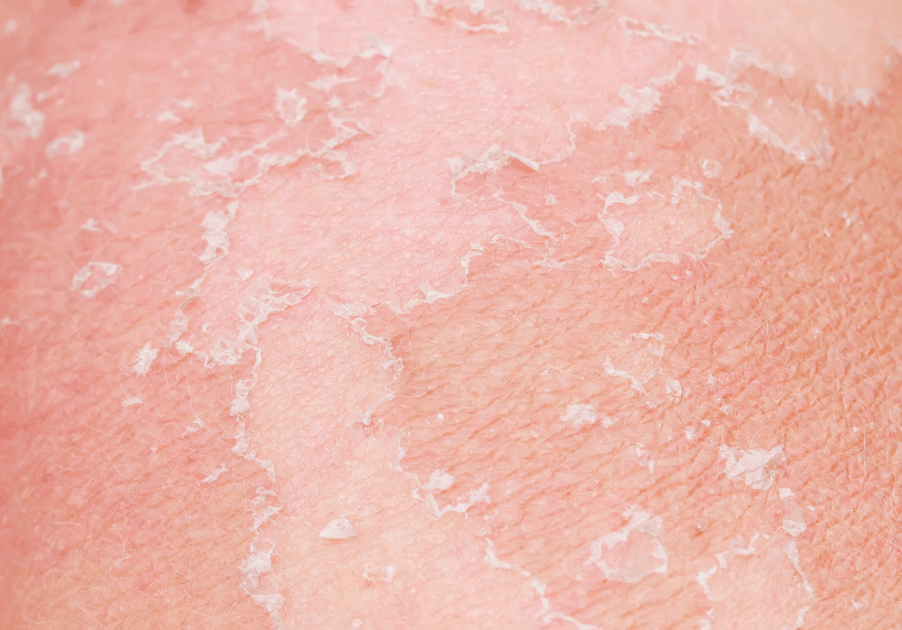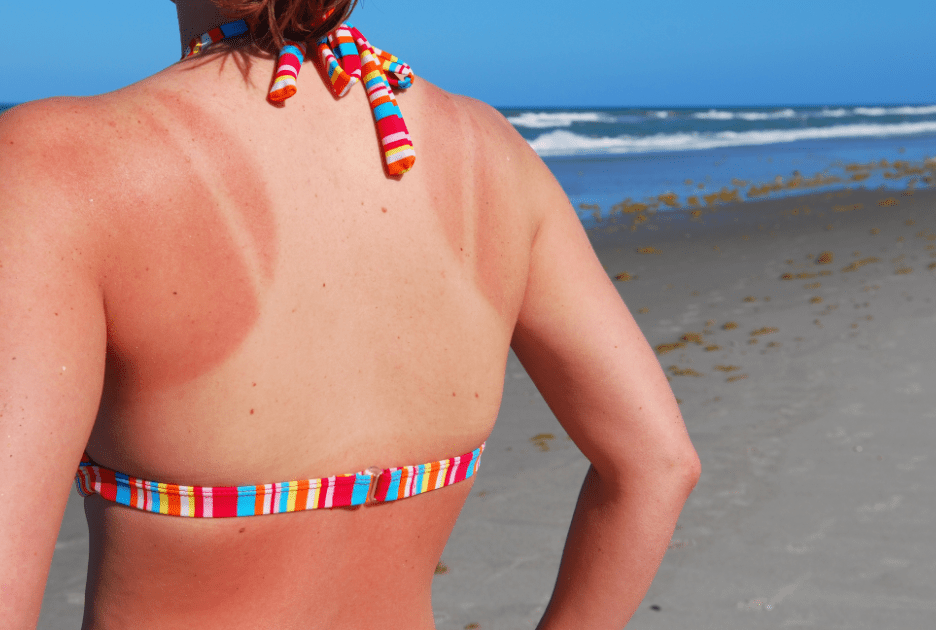Sunburn Prevention Tips: Protecting Your Skin from Harmful UV Rays
Dive into the potential consequences of sunburns, including premature aging, increased skin cancer risks, and more.
Sunburn is caused by skin exposure to ultraviolet (UV) radiation emitted from sunlight. Other sources of UV radiation include tanning salons. Sunburn usually occurs due to exposure to the sun for a longer duration. It is painful and causes inflammation. The symptoms of sunburn usually appear in a few hours and settle down within 3 to 5 days. Excessive sunburn is a major cause of skin cancer and premature aging. Skin cancer is one of the most prevalent cancers in the U.S. A National Health Interview Survey conducted in the US in 2015 revealed that 1 in 3 adults had at least one sunburn in 2015.

What are the symptoms of sunburn?
Symptoms of sunburn include:
- Blisters
- Swelling
- Skin appears hot when touched
- Severe sunburn may cause nausea, headache, fever, confusion, and weakness
- Itching and pain
- Chills
Although the sign of sunburn may be a temporary phase, it creates lasting damage to the skin. Severe sunburn also causes dehydration which can lead to shock, low blood pressure, the feeling of fainting, and weakness. However, several other skin disorders resemble sunburn, which a healthcare professional can determine.
Apart from the exposed part of our body, such as lips, scalp, nose, earlobes, and eyes, covered areas of the body can also be impacted by sunburn if UV rays penetrate through loosely worn clothes.
What causes sunburn?
UV light is the leading cause of sunburn. UVA of light is capable of penetrating deeply into the skin and causing severe damage in the long term. UVB of light does not penetrate the skin layer so deeply but is the main factor in causing sunburn. When the body’s immune system reacts against sunburn, the blood circulation of the affected area increases, resulting in inflamed skin or sunburn.
Sunburn cannot be only on hot sunny days but also during cloudy and cold days. UV reflection from snow, water, and sand can also result in skin and eyes sunburn.

What factors contribute to sunburn?
The main factors that contribute to sunburn include:
- Outdoor recreation during sunny and warm days
- Working outdoor
- Exposure of skin to UV light from the sun or other sources, such as tanning beds
- People with white skin and red hair
- Swimming – wet skin is more prone to sunburn than dry skin.
Complications associated with sunburn
Prolonged exposure to the sun can cause other skin disorders, such as premature aging, skin cancer, and precancerous skin lesions.
Premature aging
Prolonged exposure to sun and sunburn caused by UV results in the skin’s aging process called photoaging. Sing of photoaging include:
- Roughness and dryness of skin
- Excessive wrinkles
- Thinning of skin and reduction in elasticity due to weakening of connective tissues
- Dark spots on the face, arms, chest, and upper back.
- Freckles on the face
Skin cancer
Prolonged exposure to the sun, even without sunburn, increases the risk of skin cancer, known as melanoma. Also, sunburn during childhood increases the risk of developing skin cancer later in life.
The visible body parts that are exposed to the sun, such as the face, lips, hands, arms, neck, chest, and scalp, are prone to developing skin cancer.
Some skin cancer may be small growth with a bleeding tendency, getting healed after some time but reemerging again. In melanoma, changes in the shape of the mole may be noticeable.
Precancerous skin lesions
Precancerous skin lesions involve scaly and rough patches on the damaged skin due to sunlight. They appear on the exposed section of the body, including the face, neck, and hands. Later these scaly and rough patches may turn into skin cancer.
UV impact on eyes
Excessive UV light from the sun can damage the cornea of the eyes and lens—damage to the eyes lens results in developing cataracts. Eyes impacted by UV of the sun become painful. Besides sunburn, the cornea can also be damaged due to defective mercury vapor lamps, welding, and tanning lamps.
How to prevent sunburn?
Even during cloudy, cool, and hazy days, preventive measures should be taken to avoid sunburn. Special precautions should be taken around snow, water, and sand due to the strong reflection of UV rays. Some of the precautions and preventive measures are outlined below:
- Use SPF30 sunscreen. A broad-spectrum sunscreen and lip balm with SPF (sun protection factor) 30 should be used even when sunlight is not intense. Although no sunscreen can block the sun’s UVB rays, SPF30 can block up to 97% of UVB rays.
Sunscreen should be applied every 2 hours, especially if you are swimming. Food and Drug Administration (FDA) has mandated that sunscreens retain their strength for at least three years. A sunscreen that is more than three years old should not be used.
- Avoid excessive exposure to the sun between 10 a.m. and 4 p.m. Since the sun’s rays are strongest between 10 a.m. and 4 p.m., avoiding outdoor activities is advisable.
- Use sun-protective clothing. Wear a hat, long sleeve shirt, or use an umbrella to protect yourself from direct sunlight.
- Avoid tanning salons. Getting a base tan also involves the risk of sunburn.
- Wear sunglasses. Sunglasses with UVA and UVB protection should be used when going out. Dark lenses don’t necessarily provide extra protection for the eyes.
- Be aware of drugs’ impact on the skin. Some of the medications can make the skin extra sensitive to sunlight. Some antibiotics, anti-inflammatory, and cholesterol-lowering drugs can make the skin more sensitive to sunlight. Some cosmetics with alpha-hydroxy acids also contribute to skin sensitivity to the sun. Awareness of the medication and its impact on your skin is essential.
Sources:
Cleveland Clinic. Sunburn. (https://my.clevelandclinic.org/health/diseases/21858-sunburn). Accessed May 7, 2023
Mayo Clinic. Sunburn. (https://www.mayoclinic.org/diseases-conditions/sunburn/symptoms-causes/syc-20355922). Accessed May 7, 2023
John Hopkins. Sunburn. (https://www.hopkinsmedicine.org/health/conditions-and-diseases/sunburn). Accessed May 9, 2023
Category
- Health Issues (65)
- Healthy Diet (45)
- Herbs for Health (11)
- Mental Health (31)
- Skin Care (20)

